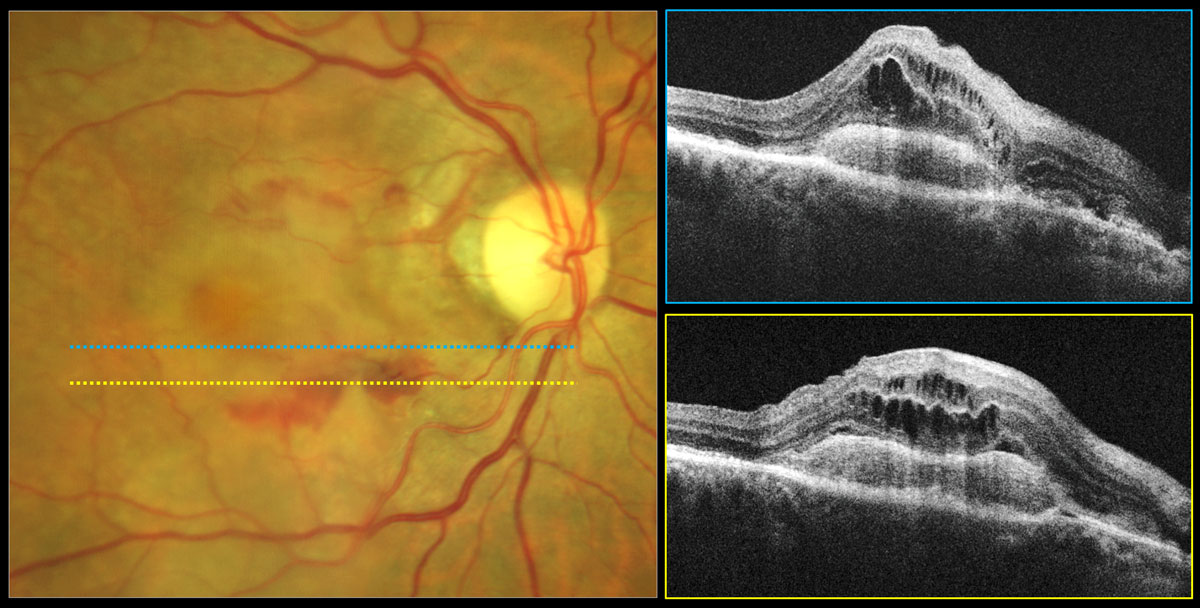 |
| Patients treated with aflibercept or ranibizumab showed stable BCVA (≤10 letters lost) in 55% of patients in a recent study. Photo: Carolyn Majcher, OD. Click image to enlarge. |
Anti-VEGF therapy has revolutionized the care of exudative age-related macular degeneration (AMD) patients, enabling significant gains in visual acuity. Researchers recently found that the long-term efficacy of aflibercept and ranibizumab was sustained out to seven years from the outset of therapy. Following a two-year intensive therapy regimen, BCVA was maintained or improved in almost half of the patients in the ranibizumab group and more than half of the patients in the aflibercept group with very few injections.
Two clinical trial sites recruited their original subjects for a re-evaluation seven years after the baseline visit of the phase III Vascular Endothelial Growth Factor Trap-Eye: Investigation of Efficacy and Safety in Wet Age-Related Macular Degeneration (VIEW 2) trial. Forty-seven eyes of 47 patients with AMD originally treated with ranibizumab (14 eyes) or aflibercept (33 eyes) were included.
The mean number of injections was 17.8±3.0 during participation in the VIEW 2 trial. A total of 30% of eyes were given additional injections, with a mean number of 5.7±4.5 after the trial. At a mean follow-up time of 82±5 months, BCVA remained stable or improved (≤10 letters lost) in 55% of patients in the entire study population, in 43% in the ranibizumab group and in 60% in the aflibercept group. In both groups, combined mean BCVA was 54±13 letters at baseline, 65±17 letters at the end of the intensive phase and 45±25 letters at the end of follow-up. There was no statistically significant difference in BCVA between the two groups at baseline or at the end of follow-up. Macular atrophy was observed in 96% of eyes, and the average area was 7.22±6.31 mm2 with no statistically significant difference between groups. The correlation between BCVA at the end of follow-up and the area of atrophy was significant. At the end of follow-up, fluid was detected in seven of 47 eyes (15%), indicating disease activity.
“In a remarkable proportion of eyes, BCVA declined severely which underlines the need for long-term follow-ups and may indicate a more prolonged intensive therapy,” the study authors concluded in their paper.
Lukacs R, Schneider M, Nagy ZZ, et al. Seven-year outcomes following intensive anti-vascular endothelial growth factor therapy in patients with exudative age-related macular degeneration. BMC Ophthalmol. March 17, 2023. [Epub ahead of print]. |


